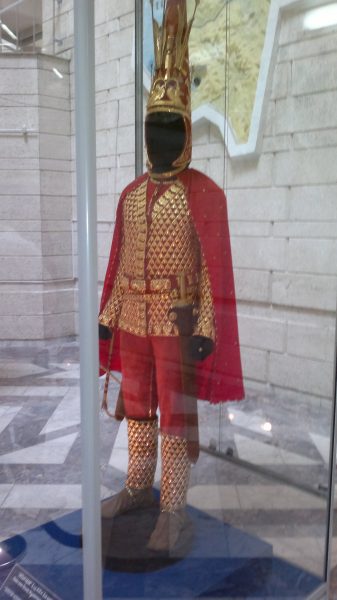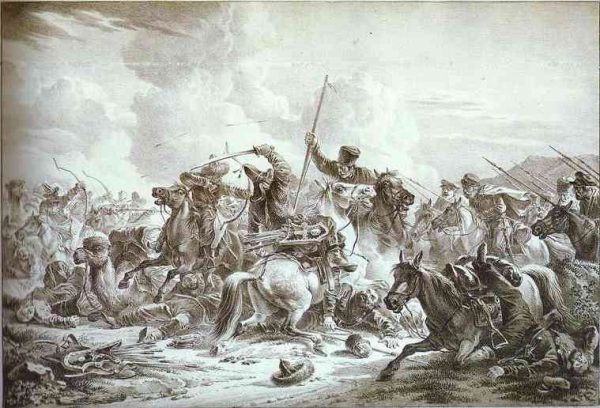Kazakhstan, History

Kazakhstan, the largest country of the Eurasian Steppe, has been a historical «crossroads» and home to numerous different peoples, states and empires throughout history.
Human activity in the region began with the extinct Pithecanthropus and Sinanthropus one million–800,000 years ago in the Karatau Mountains and the Caspian and Balkhash areas. Neanderthals were present from 140,000 to 40,000 years ago in the Karatau Mountains and central Kazakhstan. Modern Homo sapiens appeared from 40,000 to 12,000 years ago in southern, central, and eastern Kazakhstan. After the end of the last glacial period (12,500 to 5,000 years ago), human settlement spread across the country and led to the extinction of the mammoth and the woolly rhinoceros. Hunter-gatherer communes invented bows and boats, and used domesticated wolves and traps for hunting.
The change in climate forced the massive relocation of populations in and out of the steppe belt. The dry period which lasted from the end of the second millennium to the beginning of the 1st millennium BCE caused the depopulation of the arid belts and river-valley oasis areas; the populations of these areas moved north to the forest steppe.
Following with the end of the arid period at the beginning of the first millennium BCE, nomadic populations migrated into Kazakhstan from the west and the east, repopulating abandoned areas. These included several Indo-European tribes, often known collectively as the Scythians.
During the fourth century CE the Huns controlled Kazakhstan, absorbing 26 independent territories and uniting a number of steppe and forest peoples into a single state. The Huns migrated west. The future Kazakhstan was absorbed into the Turkic Kaganate and successor states.
Several independent states flourished in Kazakhstan during the Early Middle Ages; the best-known were the Kangar Union, the Oghuz Yabgu State, and the Kara-Khanid Kaganate.
In the 13th century Kazakhstan was under the dominion of the Mongol Empire, and remained in the sphere of Mongol successor states for 300 years. Portions of the country began to be annexed by the Russian Empire in the 16th century, the remainder gradually absorbed into Russian Turkestan beginning in 1867. The modern Republic of Kazakhstan became a political entity during the 1930s Soviet subdivision of Russian Turkestan.
Theorized proportion of Mongoloid elements in ancient and contemporary Kazakh populations, based on male craniological date.
Humans have inhabited Kazakhstan since the Lower Paleolithic, generally pursuing the nomadic pastoralism for which the region’s climate and terrain are suitable. Prehistoric Bronze Age cultures which extended into the region include the Srubna, the Afanasevo, and the Andronovo. Between 500 BC and 500 AD Kazakhstan was home to the Saka and the Huns, early nomadic warrior cultures.

 Русский
Русский English
English Français
Français Deutsch
Deutsch
